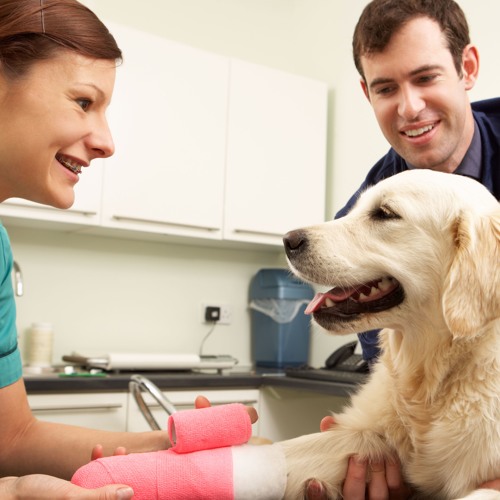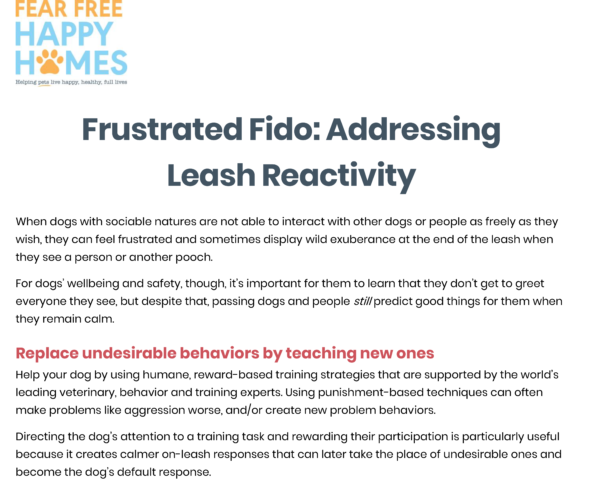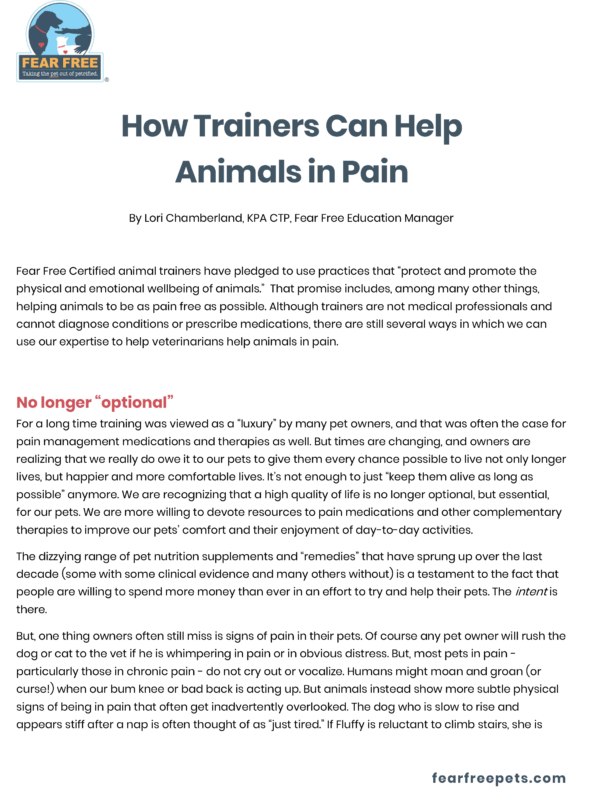
Blog Archives


Completing the Fear Free Animal Trainer Program allows trainers to work in partnership with veterinary teams to prevent and alleviate fear, anxiety, and stress and improve an animal’s emotional wellbeing during veterinary care and home care. This certification program is designed to give qualified animal trainers the knowledge and tools required to begin implementing Fear Free techniques with their clients’ pets at the veterinary hospital, through in-clinic training classes for puppies and kittens, and in day-to-day training of animals in the home.
Trainers who complete the Fear Free Animal Trainer Certification Program will acquire the skills to manage and handle dogs and cats alongside the veterinary team during veterinary visits and care to ease the pet’s apprehension regarding exams, procedures, and other care. The techniques may also be used in a home setting for carrying out or administering specific veterinarian-prescribed care plans or routine care like grooming. Most important, the Fear Free animal trainer is equipped to prepare pets for what to expect at the veterinary clinic so they have an enjoyable, stress-free experience.
By collaborating with and complementing the veterinary team’s efforts, the trainer can better provide preventive services and partner with the veterinary team to address training and behavior concerns, working from a whole health concept and with the oversight of the pet’s vet. In doing so, the pet and pet parents have a higher quality, unified team providing quality, complete care.
The purchase of the Fear Free Animal Trainer Certification Program provides you with an annual membership for the program, which requires an annual renewal fee and completion of additional annual CE to maintain your membership.


 After becoming certified, it’s not just about the how you implement the Fear Free strategies you have learned, but also how you market your newly earned certification. Being certified not only helps you practice better medicine, but it tells your clients and potential clients that you’re a step above the competition. In this podcast, we talk about how to use social media, video, email, and more to market your certification and communicate with clients.
After becoming certified, it’s not just about the how you implement the Fear Free strategies you have learned, but also how you market your newly earned certification. Being certified not only helps you practice better medicine, but it tells your clients and potential clients that you’re a step above the competition. In this podcast, we talk about how to use social media, video, email, and more to market your certification and communicate with clients.



Customer Service Representative Fear Free Training Tool
This checklist is mainly used for customer service representatives. Each client can be assured a Fear Free experience because the person on duty is ensuring that each box is checked throughout each client’s experience.

See What Changes Can Be Made in Your Hospital
This tool will guide you through recognizing stimuli that may affect the senses of clients and patients. As you take a fresh look at your own practice, you’ll begin to see what changes can be made. From there, you’ll write down what changes can be made while having access to helpful tips and resources to ensure your practice is sweet on the senses.

When dogs with sociable natures are not able to interact with other dogs or people as freely as they wish, they can feel frustrated. Use this handout to help educate your clients on ways to alleviate leash reactivity.

Although trainers are not medical professionals and cannot diagnose conditions or prescribe medications, there are still several ways in which we can use our expertise to help veterinarians help animals in pain. Use this handout to help educate potential training partners.